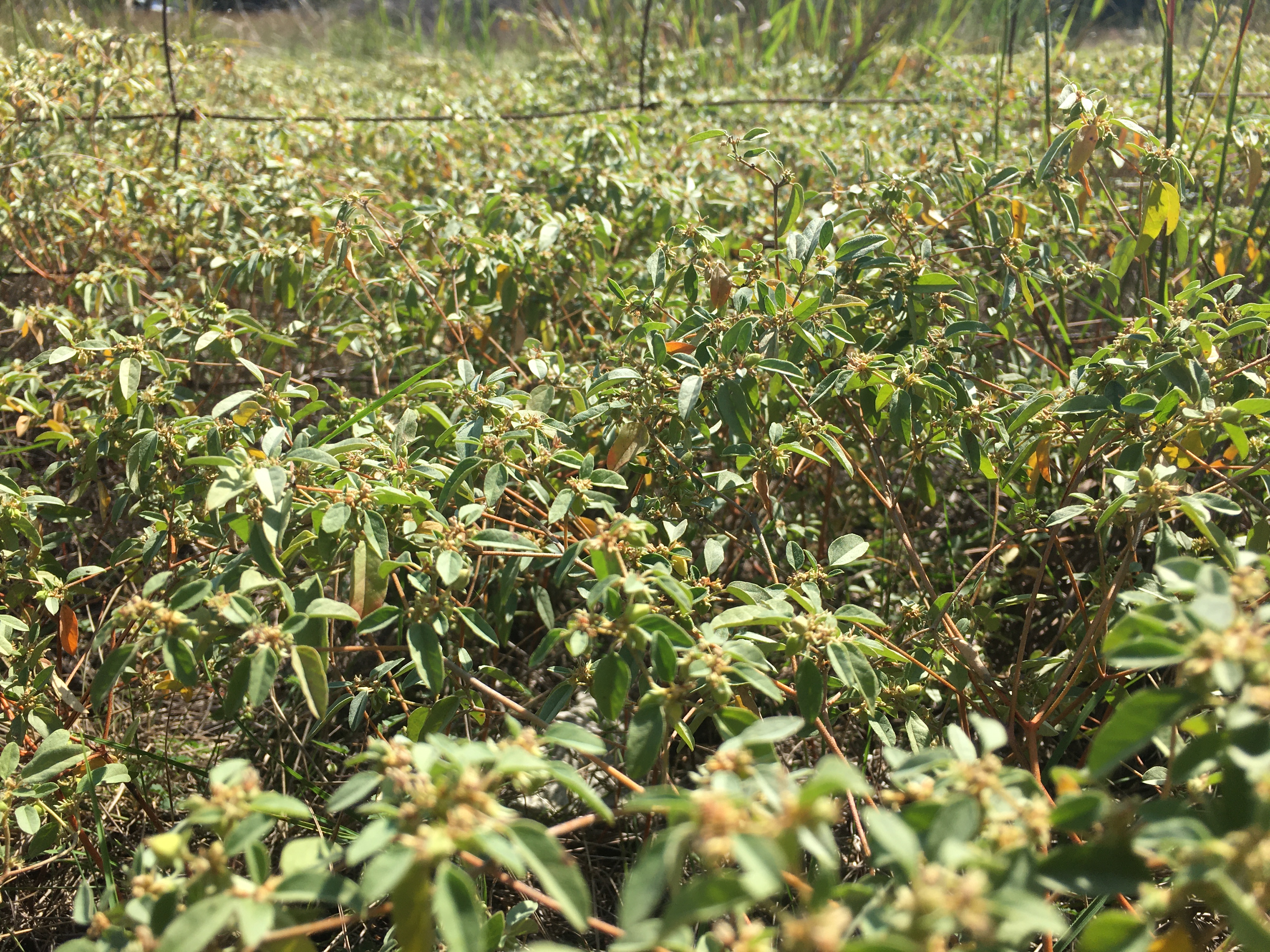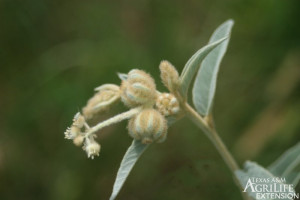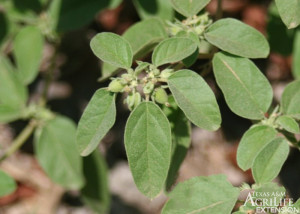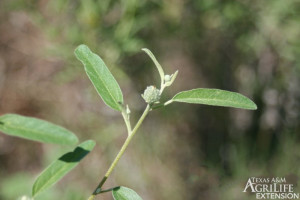Croton is having a moment this year in Texas. Like it or not, you may have noticed a bumper crop of one-seed croton, Texas croton, or woolly croton on your property. If you’ve been dismayed by the sheer amount of croton on your property and could use some positive information about this rangy Texas native (instead of just bitterly staring at what seems like an endless sea of weeds), the good news is—yes!—there are positives. In fact, croton is actively cultivated by some folks. Will you want to buy croton seeds after reading the following? Possibly not, but, hopefully, you’ll have a greater appreciation for that sea outside your window.
According to the Texas A&M Department of Rangeland, Wildlife, and Fisheries Management, there are 20 species of croton occurring in Texas, but Texas Dove Hunters Magazine puts it at “more than 25 species of croton” in Texas. In short, there’s no short supply of croton in Texas (you may just need to look out your window for confirmation of that) but don’t confuse this croton with the far more colorful garden croton, native to tropical areas, that is grown as an indoor houseplant. An endless landscape of bold and shiny evergreen leaves in vivid shades of greens, yellows, and purples, may sound more enticing but it would not provide the wildlife benefits of our more, well, beautiful-on-the-inside croton in Texas.
The three most common crotons in Texas, and the three that have done particularly well this year, are one-seed croton, Texas croton, and woolly croton. All three are generally associated with soil disturbance, lack of soil cover, and overgrazing. On the more positive side, their leaves have a pleasant aroma when crushed (some have likened it to the smell of sage). The Texas and woolly crotons have a three-seeded capsule or “fruit” while the one-seed croton, also known as prairie tea, has a capsule with only one seed.
- Woolly croton
- One-seed croton
- Texas croton
Although they’re each distinct, collectively they may be referred to as “doveweed”—and this is your first hint as to why croton may be actively cultivated. As Texas Dove Hunters Magazine puts it:
“…mourning dove and white-wing dove diets are comprised of more than 99 percent seed by weight. Even though these dove species are known to consume seeds from over 1,000 plant species nation-wide, seeds from certain plant species or families are represented repeatedly in dove diets. In Texas, doveweed is king.”
In addition to doves, these crotons are also reportedly an important food source for other birds including northern bobwhites and scaled quail, as well as additional seed-eating birds, including, at least in the case of woolly croton, Rio Grande turkeys.
Despite their positive as a popular wild bird seed, not too many other critters favor this abundant food source, including deer and livestock, although not for lack of trying by some ranchers. In “Can Cows Eat Woolly Croton?” author and livestock expert Kathy Voth describes being asked by ranchers if they could use her training technique to teach cows to eat woolly croton. According to her article, at least one rancher had success.
So, can we as humans eat croton with success? One-seed croton (aka prairie tea) may be edible. According to the website Wild Edible Plants of Texas “the leaves of this plant are edible and can be used as spices, in teas or as a basil substitute in your pesto.” But the website also goes on to warn that some plants in the same family are toxic and also advises to be sure you’re not allergic. When it comes to croton, perhaps it’s best to leave doveweed to the birds (and trainable cows).
Photo, top, a veritable sea of one-seed croton in Dripping Springs, Texas. Photos, middle, from Texas A&M Agrilife Extension’s Plants of Texas Rangeland. Lots of great information there, check it out at https://rangeplants.tamu.edu.












